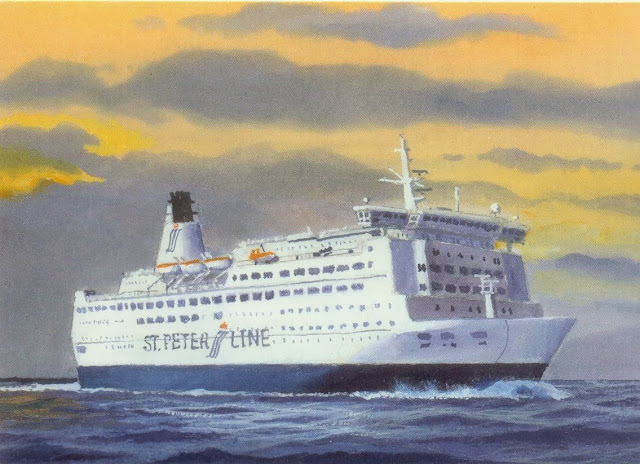Maxi Card with EUROPA stamp issued at Madeira on Europa
2012 theme - "Visit...", postmarked at Funchal - Capital of Madeira,
Portugal on May 09, 2012. Thank you Ana for this nice maxi card.
Paquete Santa Maria was Built between 1952 - 1953 in the
shipyards of the Societe Anonyme John Cockerill, in Belgium. Its maiden voyage
took place in November 1953, linking Portugal to Brazil, Uruguay, and
Argentina. It was the only Portuguese liner with regular connections to ports
of the United States. In 1973, though still relatively new, she was sold to be
dismantled in the Republic of China.
On January 23, 1961, a group of Portuguese and Spanish opposition
movement members seized control of the Santa Maria, a 609-foot-long (186 m),
20,900-ton Portuguese luxury cruise liner. Also known as Operation Dulcinea, the code name
given it by its chief architect and "leader" Henrique Galvão, it
was a rebel terrorist operation against the Government of Portugal. The
action has also been referred to as piracy, although it does not fit the
international definition of piracy involving an attack of one vessel on another
for private ends.
On January 23, 1961, the ship had 600 passengers and 300
crew members. Among the passengers were men, women, children, and
24 Iberian leftists led by Portuguese military officer and politician
Henrique Galvão.
Henrique Galvão was a Portuguese military officer and political foe of
Portuguese dictator António de Oliveira Salazar, the head of
the Estado Novo regime. Galvão had carefully planned the hijacking
with the intention of waging war until Salazar was overthrown in Portugal and
the overseas territories were subsequently offered independence. He planned on
using the hijacking as a way to bring attention to the Estado Novo in Portugal
and the related fascist regime in Francoist Spain.
The rebels boarded the ship in La
Guaira harbour (Venezuela) and in Curaçao, disguised as passengers,
bringing aboard suitcases. The suitcases had secret compartments to hide their
weapons. The rebels, along with Henrique Galvao, seized the ship, ceased all
communication, and killed one officer (3rd Pilot Nascimento Costa) and wounded
several others in the process of taking complete command over the ship. The
rebels forced crew members, along with the captain of the ship, Mário Simões
Maia, to take the ship on a different course.
The whereabouts of the ship remained unknown for several
days, until a massive United States search effort by air and sea uncovered and
communicated with it in Mid-Atlantic. Thereafter, a fleet of United States
naval vessels, including not less than four destroyers (some of which
contained USMC infantry belonging to "G" Company, 2nd Battalion of
the 6th Marine Regiment out of Camp Lejeune, NC) under the command of Rear
Admiral Allen E. Smith short-circuited Galvão's plans, when his
forces surrounded the "Santa Maria" some fifty miles offshore
of Recife, Brazil. The following day, Admiral Smith left his flag
ship the USS Gearing and proceeded via launch to the "Santa Maria"
to engage in negotiations with Galvão.
Because of an anticipated change of Presidencies in
Brazil (the incoming President being more sympathetic to Galvão's political
interests), it was not until the very next day that the Santa Maria,
surrounded by United States naval vessels, entered the harbor of Recife. There,
Galvão and his 24 leftist terrorists surrendered the Santa Maria, 600
passengers and crew of 300 to Brazilian authorities in exchange
for political asylum.
Galvão later announced that his intentions were to sail
to Angola, to set up a renegade Portuguese government in opposition to Salazar.
Galvão's stories of these accounts were translated into English and into a book
as Santa Maria: my crusade for Portugal (New York, 1961).


.jpg)























